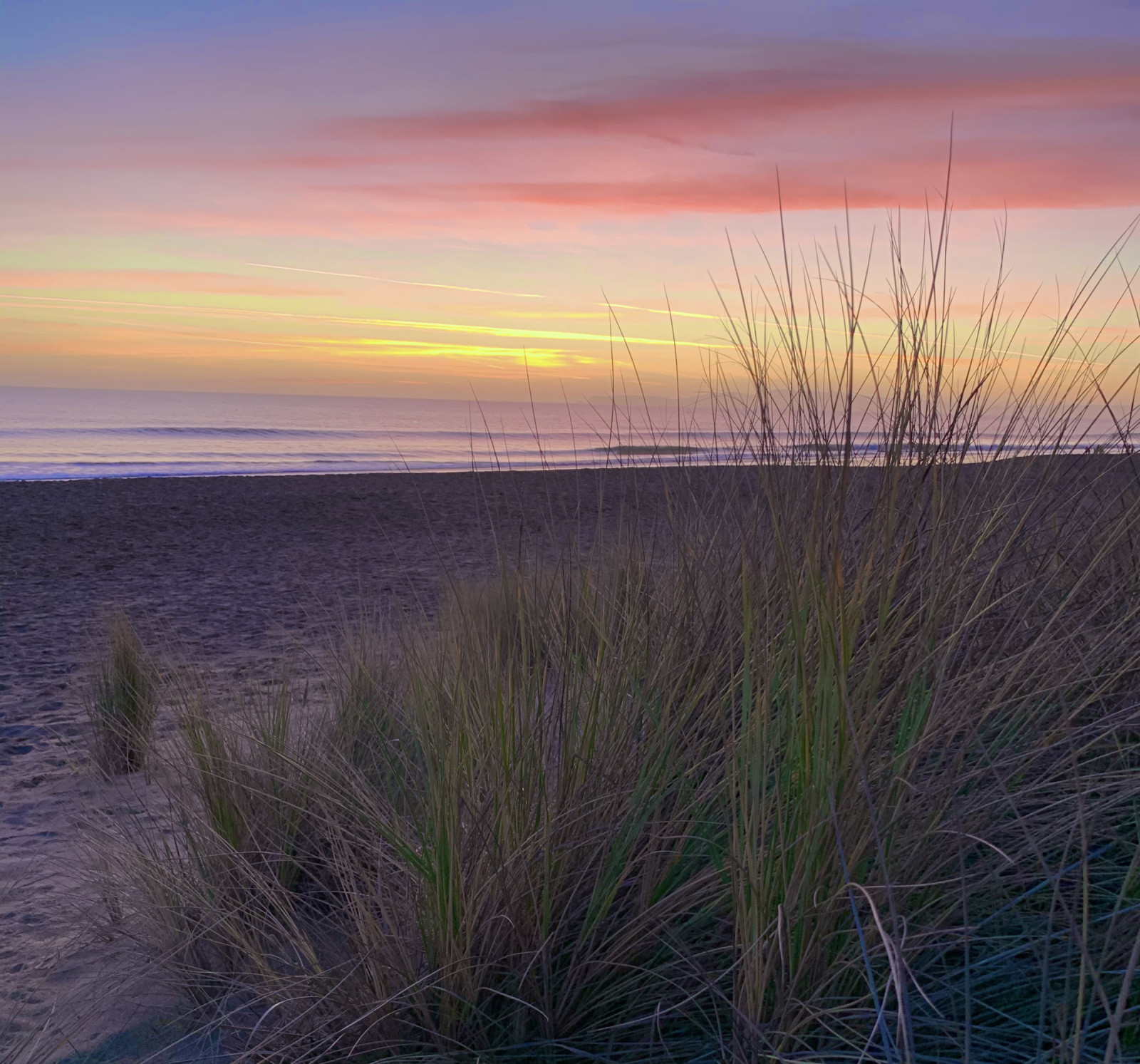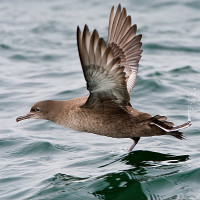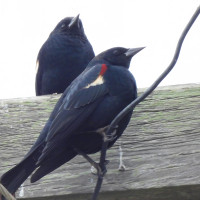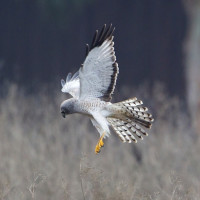Opis
This Birding Place is a general overview of the entire Point Reyes National Seashore, which includes many birding places. Please also refer to specific hotspots / birding places on Birding Places (in the future) or Ebird for info about particular spots, and which birds can be seen at each.
Point Reyes National Seashore is part of the the US National Park system and includes rocky headlands, expansive sand beaches to its open grasslands, brushy hillsides, and forested ridges. The bird species list is impressive. Many birds rest here during spring and fall migration. Specific hotspots within the park are known for being among the best places in the Western US to view migrants, as well rare vagrants. The park's location on a triangular peninsula that portrudes into a particularly productive area of the Pacific, makes it's location perfect for both marine birds and wildlife, as well as migrating passerines. In addition, Point Reyes offers a fantastic opportunity to view other wildlife, from bobcats to herds of Tule Elk in specific parts of the park.
For passerine migration, the geography of the point makes it a beacon for migrating passerines that find themselves over the ocean and seek land, while also funneling species that hug the coast on their journey. The outer point area of Point Reyes, including the lighthouse area (especially the line of Monterey Cypress trees), Nunes (A) and Mendoza (B) Ranches, and the Chimney Rock / Fishdocks area have hosted a jaw-dropping array of rare birds - especially during Fall migration. Vagrants occurring at these locations on a particular day during migration are highly dependent on factors like wind direction and speed, ground level visibility and cloud ceiling - so ask locals regarding the best conditions at a particular time of year.
Outside of migration periods, this park offers exceptional birding at any season, in a variety of habitats, and often with inspiring views of pristine natural beauty, and also human-influenced landscapes that offer habitat for a wide variety of birds and wildlife. The historic ranches, which as of 2025 are in the process of being transitioned away from agricultural use and human habitation, offer a variety of bird habitats, and have long hosted a significant number of threatened Tricolored Blackbirds during winter at the Nunes and Mendoza ranches (though this may change as active agricultural use ceases).
Point Reyes' proximity to the edge of the continental shelf and currents that bring productive cold ocean water as well as the important offshore seabird breeding colonies of the Farralone Islands (visible on clear days), make the coastal and offshore waters here a magnet for marine life, from migrating Sooty Shearwaters (sometimes visible from shore - streaming past in the tens of thousands in the late summer / fall), to Humpback Whales and other cetaceans that can often be seen from beaches or bluffs. The waters surrounding Point Reyes are protected by the Greater Farralones Marine Sanctuary, helping to preserve a vibrant offshore ecosystem. The park hosts breeding beaches for protected Northern Elephant Seals, and during the change of tides, Leopard Sharks and Bat Rays can be seen entering or exiting the entrance to Drake's Bay.
Point Reyes includes steep hills covered with coniferous forests, riparian habitats, natural meadows, large areas of pasture where the historic ranches have been used for cattle grazing, saltwater and freshwater marshes, coastal scrub, miles-long pristine beaches like North Beach and Limantour, tidal lagoons, and wave pounded rocky intertidal areas. Tomales Bay on the northeast offers relatively wave- and wind-sheltered open water saltwater habitat with extensive mudflats and marshes, Bolinas Lagoon at the southwest side offers a dynamic shallow tidal lagoon, and Drake's Bay offers a dynamic tidal estuary with kelp beds protected by the barrier of Limantour beach and spit.
Geologically, Point Reyes is a remnant of the collision of the Pacific and North American plates, and lies at the intersection of several major faults, including the San Andreas fault, which divides the older rocks underlying Point Reyes from the California Mainland. The Pacific Plate on which Point Reyes is perched, is actually creeping northwestward by around 2 inches each year, relative to the mainland!
Just a sampling of the stunning rarities seen at Point Reyes over the years include: Sandhill Crane, Trumpeter Swan, Tufted Duck, Mexican Whip-poor-will, King Eider, American Golden Plover, Common Ringed Plover, Tibetan Sand Plover, Mountain Plover, Buff-breasted Sandpiper, Sharp-tailed Sandpiper, Bar-tailed Godwit, Hudsonian Godwit, Ruff, Stilt Sandpiper, Little Stint, Franklin's Gull, Fork-tailed Storm-Petrel, Ancient Murrelet, Short-tailed Shearwater, Black-vented Shearwater, Cocos Booby, Blue-footed Booby, Yellow-billed Loon, Red-headed Woodpecker, Eastern Wood-Pewee, Alder Flycatcher, Vermilion Flycatcher, Great Crested Flycatcher, Yellow-throated Vireo, Philadelphia Vireo, Yellow-green Vireo, Bendire's Thrasher, Gray-cheeked Thrush, Golden-winged Warbler, Blue-winged Warbler, Virginia's Warbler, Bay-breasted Warbler, Black-throated Blue Warbler, Black-throated Green Warbler, Canada Warbler, Ovenbird, Connecticut Warbler, Worm-eating Warbler, Kentucky Warbler, Cape May Warbler, Bay-breasted Warbler, Black-throated Blue Warbler, Yellow-throated Warbler, Painted Redstart, Scarlet Tanager, Painted Bunting, Bobolink, Dickcissel, Scott's Oriole, Chestnut-collared Longspur, Smith's Longspur, Red-throated Pipit, Eastern Yellow Wagtail, White Wagtail, Common Redpoll, European Goldfinch, and LeConte's Sparrow.
Szczegóły
Dostęp
Point Reyes National Seashore is located on the Point Reyes Peninsula in Marin County, about 30 miles northwest of San Francisco. You can access several parking lots by car. Press a P on the map for directions to a parking lot. Accessibility varies by particular location within the park.
The park includes a wide array of trails for hiking, horse riding, in a variety of terrain types. There are also backpacking camps, and options for building campfires on the beach (check the park website for regulations and restrictions), places for sea kayaking, paddle boarding and other activities.
Teren i siedlisko
Las , Tereny podmokłe , Rzadkie drzewa i krzewy , Łąka , Morze , Dolina , Płaskowyż , Góry , Jezioro , Plaża , Błota , Rolnictwo/uprawy , Wydmy , Wrzosowisko , TrzcinowiskaWarunki
Pagórkowaty , Górzysty , Otwarty krajobraz , Płaski , PiaszczystyTrasa dookoła
NieCzy luneta będzie przydatna ?
TakUdany sezon obserwacyjny
Przez cały rokNajlepszy czas na wizytę
Wiosenne migracje , Jesienne migracjeTrasa
Droga utwardzona , Wąski szlakPoziom trudności szlaku pieszego
Średnio wymagający spacerDostępne
Samochód , PieszoCzatownia/platforma obserwacyjna
NieLinki
- Point Reyes National Seashore website
- Palomarin Field Station (open to the public to view bird banding in the right season and hours.
- Point Reyes Lighthouse and lighthouse trees Birding Place (famous for vagrants during migration, when weather conditions are right)

 (002) Mathieu Soetens.jpg)


